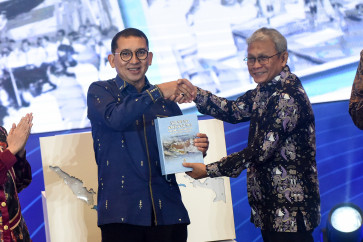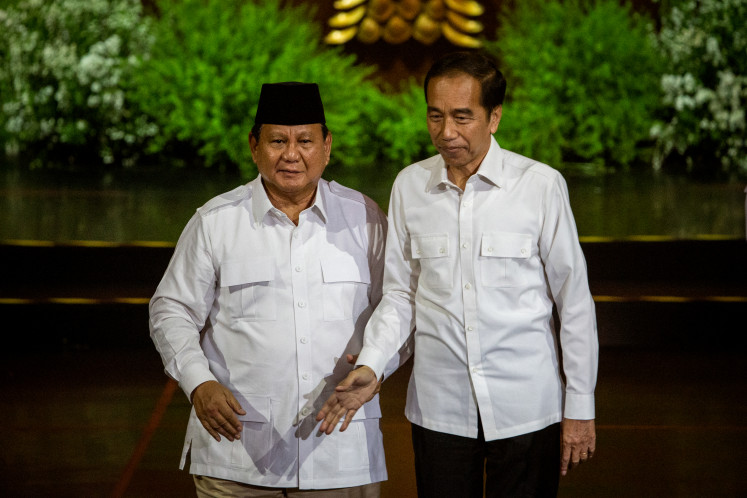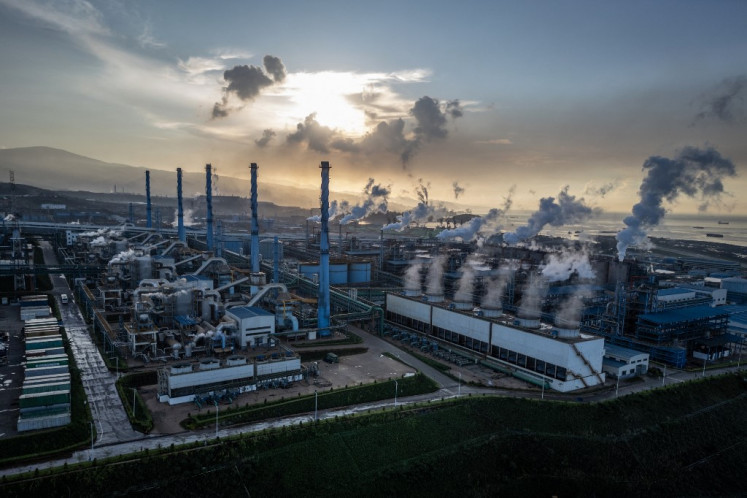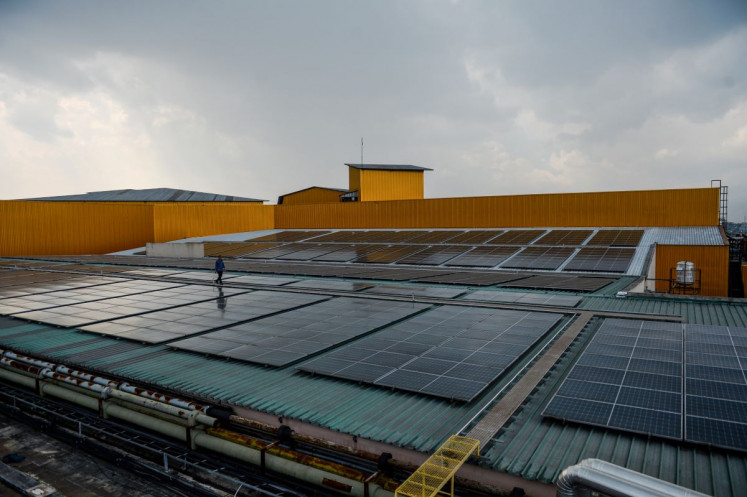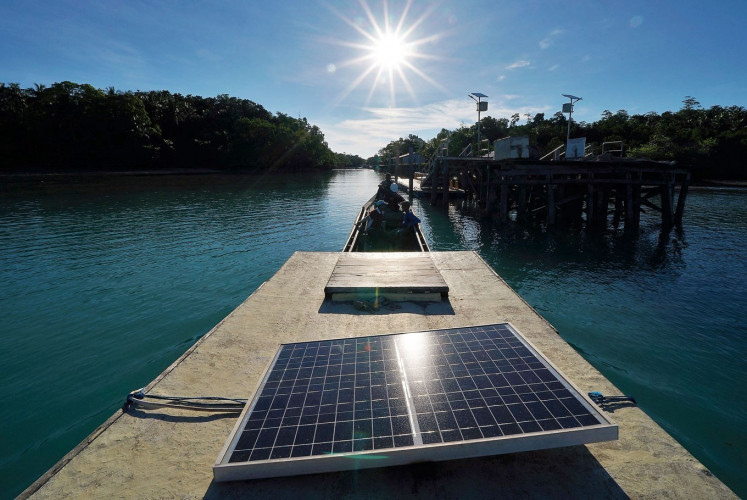Popular Reads
Top Results
Can't find what you're looking for?
View all search resultsPopular Reads
Top Results
Can't find what you're looking for?
View all search resultsIndonesia’s nickel downstreaming needs more global players
China’s dominance over Indonesia’s nickel industry through smelter joint-ventures and mine co-ownership makes potential Western investors cautious about investing in Indonesia.
Change text size
Gift Premium Articles
to Anyone
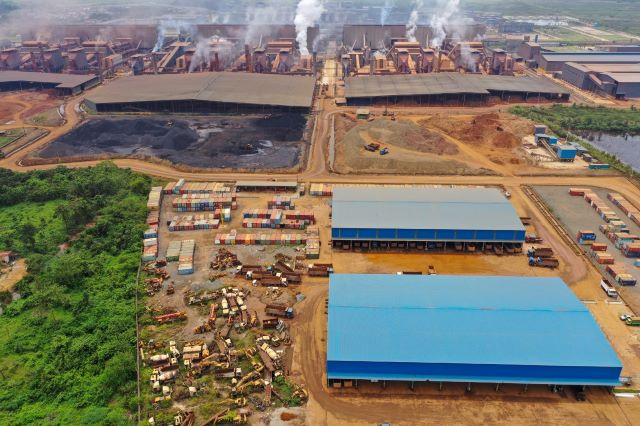 Metal boom: Smoke rises on Feb. 10 from a nickel smelter belonging to Chinese miner Virtue Dragon Nickel Industry (VDNI) in Morosi, Southeast Sulawesi. The facility was part of the huge rush among domestic and foreign enterprises to mine the critical component used in electric vehicle batteries in Indonesia, the world's largest nickel producer. (AFP/Adek Berry)
Metal boom: Smoke rises on Feb. 10 from a nickel smelter belonging to Chinese miner Virtue Dragon Nickel Industry (VDNI) in Morosi, Southeast Sulawesi. The facility was part of the huge rush among domestic and foreign enterprises to mine the critical component used in electric vehicle batteries in Indonesia, the world's largest nickel producer. (AFP/Adek Berry)
S
peaking at the third Belt and Road Initiative (BRI) Forum in Beijing last month, Indonesian President Joko “Jokowi'' Widodo lauded the contribution of China's investment to Indonesia's strategic priorities. This includes Indonesia’s ambition to become a global electric vehicle (EV) manufacturing hub through its nickel downstreaming policy.
China’s contribution has been immense to Indonesia’s nickel industry. China imported nearly 90 percent of Indonesian nickel in 2022. According to the Indonesian Nickel Miners Association (APNI), China accounts for 90 percent of investment in the smelters that process Indonesian nickel ore into high value-added products such as stainless steel and EV batteries.
At the Indonesia-China Business Forum, held on the sidelines of October’s BRI Forum, Indonesia further boosted the cooperation by signing US$13.7 billion in deals with Chinese companies for the development of the EV industry, among other sectors.
China’s investments and markets are undeniably vital in this capital-intensive sector. However, dependence on one partner will put Indonesia in a precarious position amid the complex global mineral supply chain. Indonesia might also lose the opportunities from potential markets in the countries that are currently attempting to “derisk” from China.
As Indonesia’s top export destination, China’s current economic slowdown will negatively affect demand and the price of Indonesian minerals. This is evident from China’s demand for other minerals from Indonesia such as crude palm oil and coal, which declined by up to 18.4 percent and 55.7 percent, respectively. With reliance on that country, the impact of China’s waning economic performance will critically affect Indonesia’s nickel suppliers.
The development of lithium iron phosphate (LFP) batteries also poses a threat, as China grows less reliant on Indonesian nickel. China’s preference for LFP batteries that require less nickel is steadily increasing, up 11 percent month on month, while China’s output of more nickel-dependent lithium manganese cobalt oxide (NCM) batteries declined 4 percent. Currently, LFP batteries comprise 65.81 percent of China's battery production, while lithium nickel cobalt manganese oxide (NMC) batteries only constitute 33.91 percent.
Moreover, the United States and like-minded partners have been implementing the “small yard, high fence” strategy to restrict China’s access to critical minerals. To reduce dependence, the West has been ardent in seeking alternative sources for minerals crucial in the clean energy transition through policies such as the US Inflation Reduction Act (IRA) and the European Union's 2023 Critical Raw Materials Act.




